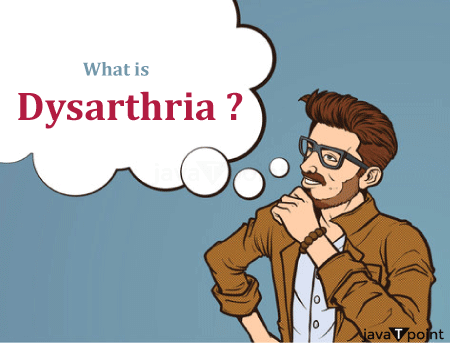DysarthriaA motor speech disease known as dysarthria is characterised by weakening or paralysis of the muscles that create speech because of nervous system dysfunction. People can slur their words because of the injury making it difficult for them to control their tongue or voice box. Speech therapy can improve their communication skills. What is Dysarthria?
A motor speech impairment called dysarthria (speak "dis-AR-three-uh") makes it challenging to create and pronounce words. When the nerve system is damaged, people may experience motor speech disorders that make it difficult for them to properly control their tongue, voice box (larynx), and jaw, among other speech-related body parts. It's difficult to speak in a way that other people can understand if the person have dysarthria. Dysarthria may be inherited or develop over timeWhat are the Types of Dysarthria?Dysarthria might fall into one of six categories. They are arranged according to the particular area of the neurological system that is impacted. Damage to central nervous system, which consists of the brain and spinal cord, as well as the peripheral nervous system, which is made up of the network of nerves that carries messages throughout your body, may cause dysarthria.
How Common is Dysarthria?Neurological conditions, like:
What are the Symptoms of Dysarthria?The main symptom of dysarthria is the inability to talk in a way that other people can understand. It could be difficult for the person to move your lips, tongue, or jaw in a way that produces coherent speech. Dysarthria signs and symptoms include:
What causes Dysarthria?Dysarthria happens when the parts of nervous system that control the vocal cords are injured. Included in this are the muscles of the face, throat, and respiration. Accidents, illnesses, and neuromuscular conditions can all result in dysarthria. The following are typical causes:
Some drugs, including sedatives and anti-seizure drugs, can produce symptoms resembling dysarthria. What causes Dysarthria?Speech issues can make social interactions challenging. Stress at work, school, and in the relationships in general might result from not being able to communicate and be understood. Depression and other mental health problems may result from the stress. It's crucial to receive treatments that can assist in communicating and upholding meaningful relationships with people. How is Dysarthria Diagnosed?Healthcare professional will do a physical examination and inquire about the medical history. They could have an evaluation by a speech-language pathologist (SLP) to find out how bad your dysarthria is. The ability to control the breathing, voice, and voice quality will be evaluated. Additionally, they will assess how well people can move their lips, tongue, and face. What Tests might I need to Diagnose Dysarthria?
A modified barium swallow study or a videofluoroscopic swallow study (VFSS) may be carried out by the healthcare provider to check for swallowing issues, which can occasionally accompany dysarthria. How is Dysarthria Treated?Speech therapy is frequently helpful for people with dysarthria to enhance communication. In order to improve communication with the family and friends, a speech-language pathologist can also work with them. People with dysarthria might pick up the following skills during speech therapy sessions:
They might require a gadget to communicate with people if their dysarthria is severe. Among these tools are a message or bulletin board, a dedicated computer with a keyboard, and a message display. Could Dysarthria be Avoided?Although some causes of dysarthria, such as trauma or stroke, are not preventable, people can take precautions to lower the risk of developing them. For instance, maintaining a nutritious diet can lower the risk of developing illnesses like high blood pressure, diabetes, and coronary artery disease, which all raise the risk of having a stroke. Can Dysarthria ever be Cured?Depending on the root cause of the dysarthria. Discontinuing the medication frequently cures dysarthria if it is an adverse effect. It's possible that dysarthria brought on by a chronic (long-term) neuromuscular disorder, a stroke, or trauma won't go away. Nevertheless, speech therapy can help you communicate more effectively. Speech therapy can provide with the skills to communicate nonverbally as well as improve the ability to use the speaking muscles. A Note from DoctorIf the person have dysarthria and find it difficult to be understood when he/she speak, discuss the concerns with the healthcare physician. To improve the communication, doctor may advise speech therapy. Even though speaking may be challenging due to muscle weakness, treatments might help them to retain crucial relationships.
Next TopicFebrile Seizures
|
 For Videos Join Our Youtube Channel: Join Now
For Videos Join Our Youtube Channel: Join Now
Feedback
- Send your Feedback to [email protected]
Help Others, Please Share









